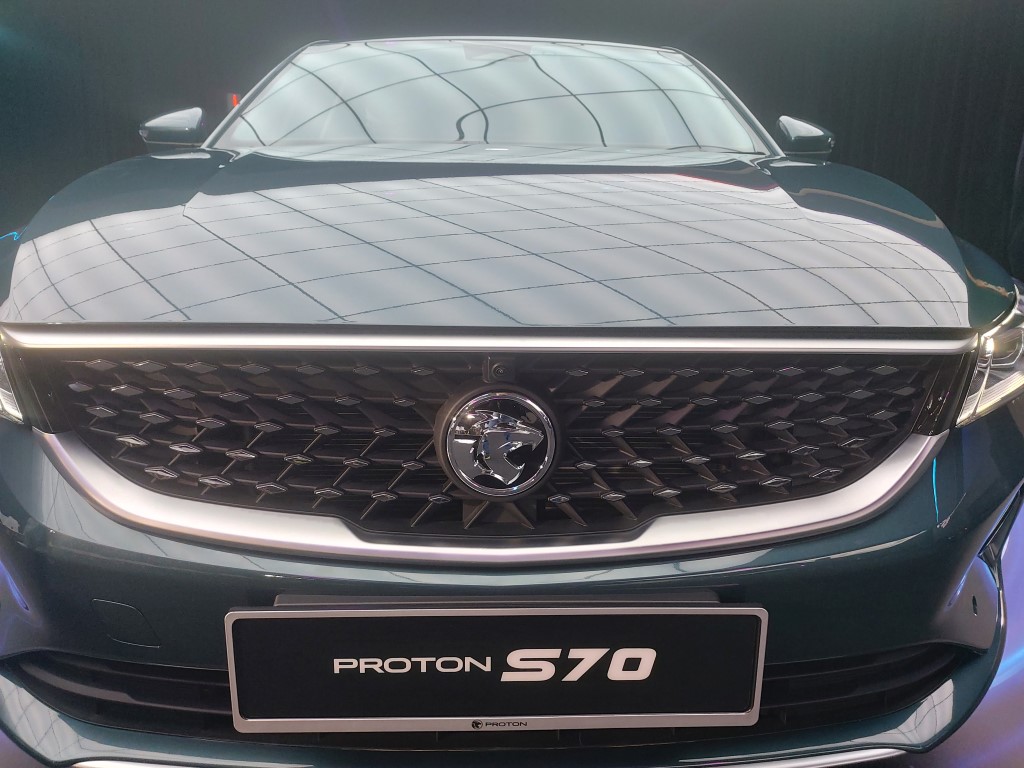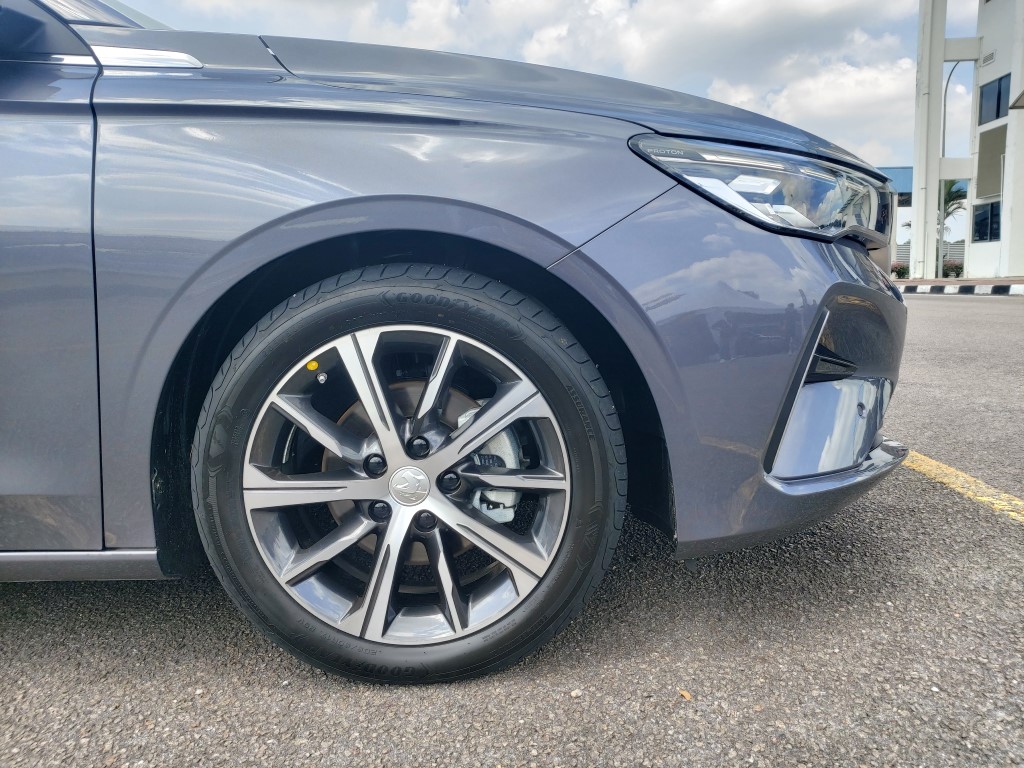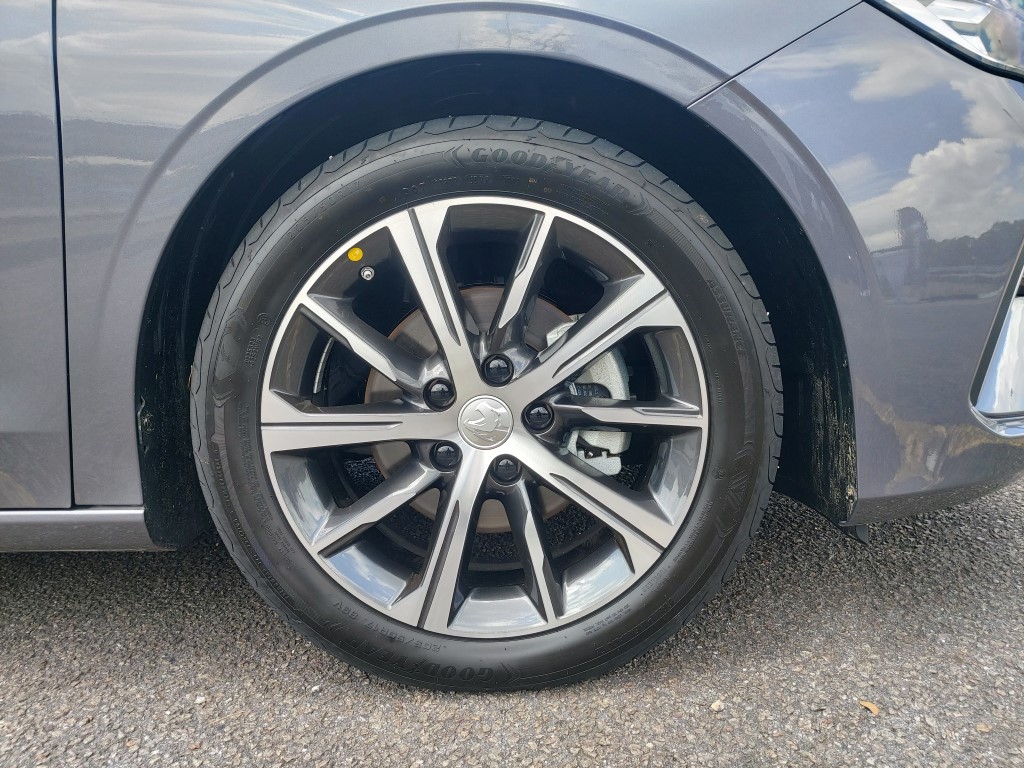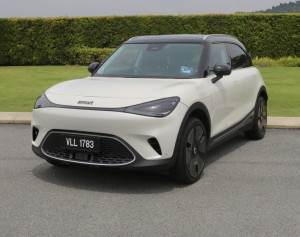PETALING JAYA: Although it is the larger and more powerful car, it looks like the Proton S70 C-segment sedan will compete directly in terms of price points, against B-segment cars such as the Honda City, Toyota Vios and Nissan Almera.
"The primary competitors are the City, Vios and Almera. The secondary competitors are the C-segment Toyota Corolla and Honda Civic," said Proton vehicle programme executive (project management office) Mohd Haizam Ghazali, during a recent media preview of the S70 at the Proton test track in Shah Alam.
"We are looking at the same customer base as the Vios and City," said Proton vice president of sales and after-sales Edmund Lim.
Also present was Proton deputy CEO Roslan Abdullah, who said this hinted at the price range of the new sedan.
It's worth noting that prices for the latest City and Vios start from RM84,900 and RM89,600 respectively, while the Nissan Almera 1.0L Turbo variants are priced from RM83,888 to RM95,888.
Meanwhile, prices for the Toyota Corolla and Honda Civic from RM139,800 and RM131,900 respectively.

Lim also pointed out that the price gap between the B-segment Proton Persona (priced from RM47,800 to RM58,300) and S70 would see the two cars catering to different customer bases.
"We are looking at 2,000 to 3,000 units a month (sales target) for the S70," said Lim.
Like the X50's non-Flagship grades, the S70 will be solely powered by a 1.5-litre multi-port fuel injection (MPI) turbocharged engine producing 150ps at 5,500rpm and 226Nm of torque from 1,500 to 4,000rpm which is mated to a seven-speed dual-clutch transmission (DCT).
There are three drive modes - Eco, Sport and Comfort.
There are no plans to have a hybrid model or an S70 variant with the more powerful 1.5-litre petrol direct-injected (GDI) turbocharged engine that outputs 177PS at 5,500rpm and 255Nm of torque from 1,500 to 4,000rpm.
"We had done an extensive market survey before moving into development of the S70. We had targets to meet (performance, handling, price points). The 1.5T MPI engine is sufficient to meet our targets for this car, and market requirements,” said Mohd Haizam.

Earlier, Proton had said that following in the footsteps of the X70, X50 and mild hybrid X90, the S70 is the fourth model to be jointly developed together with Geely.
The S70 is based on the fourth-generation Geely Emgrand, which uses Geely Auto Group's BMA or B-segment Modular Architecture platform which also underpins the Proton X50.
Mohd Haizam said in addition to the conversion from left to right-hand drive, the national automaker also tuned the S70 to "maintain the Proton ride and handling quality" which are more suitable for Malaysian motorists.
"It is tuned for towards daily usage; for comfort and practicality, as well as for stability at higher speeds," he said.
Meanwhile, Proton chief designer Azlan Othman pointed out that the S70's exterior design features a pronounced waistline, and emphasises its wide body profile and athletic build with broad shoulders.

The rear combination lamps feature 190 LED bulbs, and the car has a big 500-litre boot.
A new exterior colour is Teal Bayou Green.
The S70 also has a low 0.27 Cd drag coefficient, which translates to a better impact on fuel economy.
The drag coefficient judges the aerodynamic efficiency of a car (how well a vehicle can move through air), and - the lower the value, the better.
The S70 has four variants, namely Executive, Premium, Flagship and Flagship X.
The entry-level Executive variant comes with six airbags, Lane Change Assist (LCA), electric parking brake, 16-inch alloy wheels, fabric seats and an 8-inch infotainment head unit.
The Premium variant gets upgrades such as projector LED headlamps, a rear tail light bar, leatherette seats, automatic air-conditioning and a reverse camera.

The Flagship comes with advanced driver assistance systems (ADAS), a tyre pressure monitoring system, 17-inch alloy wheels, 10.3-inch LCD meter combination, a driver's powered seat, 12.3-inch LCD infotainment head unit, wireless charger, and a 360-degree surround view camera system.
ADAS include Autonomous Emergency Braking (AEB), Forward Collision Warning (FCW), Adaptive Cruise Control (ACC) with Stop and Go, Intelligent Cruise Control (ICC), Lane Departure Warning (LDW), Lane Departure Prevention (LDP), Lane Centering Control (LCC), Traffic Sign Information (TSI), Intelligent High Beam Control (IHBC), Lane Change Assist (LCA), and Door Opening Warning (DOW), Rear Collision Warning (RCW) and Rear Cross Traffic Alert (RCTA).
The 12.3-inch LCD infotainment head unit comes with 6GB RAM and 64GB internal storage, as well as Proton Link app, and the "Hi Proton" voice command function.
Meanwhile, the Flagship X variant's upgrade is a sunroof.
The S70 also has three USB-A charging ports, two USB-C ports and a wireless charger (Proton did not say whether this is standard on all variants).

In order to provide a taste of the S70's capabilities, Proton organised a session at its test track in Shah Alam for media members.
Carsifu.my started with an accelerate and hard-braking session where the turbocharged 1.5-litre S70 with 150ps and 226Nm of torque, was pitted against two naturally aspirated 1.5-litre rivals - a fifth-generation Honda City (pre-2023 facelift) with 121ps and 145Nm of torque, and a 2024 fourth-generation Toyota Vios with 106ps and 138Nm.
We noted that the S70 was fitted with Goodyear Assurance TripleMax 2 tyres sized 205/50 R17, while the Vios had similarly sized Continental PremiumContact C tyres, and the City had Toyo Proxes CR1 tyres sized 185/55 R16.
We were told to do an off-the-line sprint to 100kph, followed by hard braking, in each car.
From the get-go, the City always seemed to lead with an initial burst of speed, but the turbocharged S70 would quickly overtake and surge ahead.
The S70's braking system is impressive and we found good bite, and the car always came to a complete halt with apparently the shortest stopping distance.
It's interesting to note that when the fourth-generation Emgrand was launched in China in August 2021, it was fitted with Bosch’s 9.3-generation ESP (electronic stability programme) system and had claimed a best-in-class 100kph to 0kph braking in under 36 metres.

There was also a session involving the Forward Collision Warning (FCW) and Autonomous Emergency Braking (AEB), where we accelerated to slightly above 50kph before lifting off the accelerator pedal.
As the car approached a stationary obstacle in front, warning beeps were emitted and as we got closer, the S70 automatically braked hard and came to a full stop, with a harsh, grating noise.
During the traffic cone slalom course and a two quick laps on the test track, the S70 felt quite planted on the turns, with body roll very well contained.
Steering was precise as we manoeuvred the car swiftly through the twisty cone slalom course.
Based on the brief sessions on the test track, the S70 comes across as delivering solid handling and confident braking, along with good ride comfort.



























